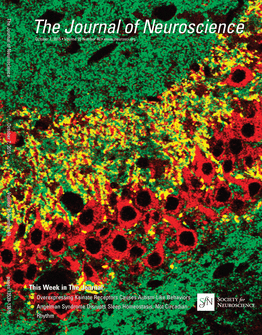Lines of investigation
Since 1990, we have been working on the structure and function of glutamate receptors, the most important signaling system in the brain. We analyzed one important characteristic of neurotransmitter receptors: desensitization (Neuron 1992); defined its structural determinants (Neuron, 1998a) and the allosteric mechanism involved (Neuron, 2001), intrinsic to the NMDA type of glutamate receptors. We were first describing the existence in central neurons of functional kainate receptors (KARs), demonstrating that KAR proteins form functional receptor channels in hippocampal neurons (PNAS 1993) and providing the tool for further studies, the drug 2-3-benzodiazepine, GYKI 53655, which allowed their pharmacological isolation (Neuron 1995a). This finding paved the way for progress in the field. Our group was among the pioneers in applying single-cell RT-PCR (Neuron, 1995b) to study these receptors. We described their fundamental role in controlling neuronal tissue excitability and epileptogenesis (Neuron, 1997). Also demonstrated that KARs have a dual mechanism of signalling: as ion channels and triggering a second messenger cascade, involving a G-protein (Neuron, 1998b; PNAS, 2000). This and subsequent work (Neuron, 2003; EMBO J., 2007; J. Neurosci., 2013) put forward the new concept that ion channel-forming receptors are also able to signal through a G-protein, opening new vistas on the functional mechanisms of ionotropic glutamate receptors and provided strong evidence supporting their role in the maturation of neural circuits during development (J Neurosci., 2013). We have also identified some members of the KAR interactome (Neuron, 2009; J. Neurosci, 2013, J. Neurosci, 2015a) and provided fundaments on the structure of non-canonical signalling as we identified the Go alpha subunit and GluK1 subunit as natural partners for this activity.
All these data led us to conclude that KARs influence neuronal excitability and information transfer in the brain (see our 2013 Neuron review). However, the role played by KARs in brain physiology and even clearer in pathology is still much more poorly understood than that of other glutamate receptors. Our recent discovery that overexpressing one of the KAR high affinity subunits, GluK4, reproduces autism traits (J. Neurosci., 2015b) represents one of the most compelling demonstrations of their involvement in mental disease; but also that slightly altering the gain of particular synapses may significantly impact the behavior.
These results prompted us to propose the general objective of our current project: to get insights into the role played by KARs in the pathophysiology of brain diseases, in particular those related with the alteration of the mood. We have hypothesized that an excess of function of KARs, in particular GluK4, drastically affects circuit formation determining the functional state of particular brain nuclei and/or neuronal circuits, which further result in altered brain performance and therefore altered behavior. Indeed, in the past few years, the findings from genetics and brain-imaging studies support the idea that the mental disorders overlap. In summary, in the next few years we will try to bridge the gap between cellular and molecular properties of brain processes and behaviour in the hope that understanding of brain diseases requires the definition of the molecular, synaptic and cellular alterations underpinning the behavioural features that define the disease.
Representative Publications
- Kainate receptors regulate synaptic integrity and plasticity by forming a complex with synaptic organizers in the cerebellum. Kakegawa W, Paternain AV, Matsuda K, Aller MI, Iida I, Miura E, Kazuya Nozawa K, Yamasaki T, Sakimura K, Yuzaki M and Lerma J. Cell Reports. 2024 in press https://doi.org/10.1016/j.celrep.2024.114427
- Unbalanced dendritic inhibition of CA1 neurons drives spatial-memory deficits in the Ts2Cje Down syndrome model Valbuena S, García Á, Mazier W, Paternain AV, Lerma J Nature Communications 2019 10:4991 https://doi.org/10.1038/s41467-019-13004-9
- Increased Grik4 Gene Dosage Causes Imbalanced Circuit Output and Human Disease-Related Behaviors Arora V, Pecoraro V, Aller MI, Roman C, Paternain AV, Lerma J Cell Rep 2018 23(13):3827 https://doi.org/10.1016/j.celrep.2018.05.086
- Non-canonical Signaling, the Hidden Life of Ligand-Gated Ion Channels Valbuena S, Lerma J Neuron 2016 92(2):316 https://doi.org/10.1016/j.neuron.2016.10.016
- Synaptic Targeting of Kainate Receptors Palacios-Filardo J, Aller MI, Lerma J Cereb Cortex 2016 26(4):1464 https://doi.org/10.1093/cercor/bhu244
- Increased Dosage of High-Affinity Kainate Receptor Gene grik4 Alters Synaptic Transmission and Reproduces Autism Spectrum Disorders Features Aller MI, Pecoraro V, Paternain AV, Canals S, Lerma J J Neurosci 2015 35(40):13619 https://doi.org/10.1523/JNEUROSCI.2217-15.2015
- Spontaneous activity regulates Robo1 transcription to mediate a switch in thalamocortical axon growth Mire E, Mezzera C, Leyva-Diaz E, Paternain AV, Squarzoni P, Bluy L, Castillo-Paterna M, Lopez MJ, Peregrin S, Tessier-Lavigne M, Gare S, Galceran J, Lerma J, Lopez-Bendito G Nat Neurosci 2012 15(8):1134 https://doi.org/10.1038/nn.3160
- Kainate receptors regulate synaptic integrity and plasticity by forming a complex with synaptic organizers in the cerebellum. Kakegawa W, Paternain AV, Matsuda K, Aller MI, Iida I, Miura E, Kazuya Nozawa K, Yamasaki T, Sakimura K, Yuzaki M and Lerma J. Cell Reports. 2024 in press https://doi.org/10.1016/j.celrep.2024.114427
- Exploring the Frontiers of Neuroscience: Highlights from the 11th IBRO World Congress (Editorial) Daniela Schiller, Juan Lerma Neuroscience. 2023 525, 10 August 2023, Pages 1-2 https://doi.org/10.1016/j.neuroscience.2023.07.007
- Adenosine A2A receptors control synaptic remodeling in the adult brain. Xu, X., Beleza, R.O., Gonçalves, F.Q., Valbuena, S., Alçada-Morais, S., Gonçalves, N., Magalhães, J., Rocha, J.M.M., Ferreira, S., Figueira, A.S.G., Lerma, J., Cunha, R.A., Rodrigues, R.J., Marques, J.M. Sci Rep. 2022 12(1): art 14690 https://doi.org/10.1038/s41598-022-18884-4
- Kainate receptors, homeostatic gatekeepers of synaptic plasticity Valbuena S, Lerma J Neuroscience 2021 19,01180556 https://doi.org/10.1016/j.neuroscience.2019.11.050
- Losing balance: Kainate receptors and psychiatric disorders comorbidities ValbuenaS, Lerma J Neuropharmacol 2021 191:108558 https://doi.org/10.1016/j.neuropharm.2021.108558
- Diffusion-weighted MRI in neurodegenerative and psychiatric animal models: experimental strategies and main outcomes Eed A, Cerdán Cerdá A, Lerma J, De Santis S J Neurosci Methods 2020 343:108814 https://doi.org/10.1016/j.jneumeth.2020.108814
- Variability in the analysis of a single neuroimaging dataset by many teams Botvinik-Nezer R, Holzmeister F, Camerer CF, Dreber A, Huber J, Johannesson M, Kirchler M, Iwanir R, Mumford JA, Adcock RA, Avesani P, Baczkowski BM, Bajracharya A, Bakst L, Ball S, Barilari M, Bault N, Beaton D, Beitner J, Benoit RG, Berkers RMWJ, Bhanji JP, Biswal BB, Bobadilla-Suarez S, Bortolini T, Bottenhorn KL, Bowring A, Braem S, Brooks HR, Brudner EG, Calderon CB, Camilleri JA, Castrellon JJ, Cecchetti L, Cieslik EC, Cole ZJ, Collignon O, Cox RW, Cunningham WA, Czoschke S, Dadi K, Davis CP, Luca A, Delgado MR, Demetriou L, Dennison JB, Di X, Dickie EW, Dobryakova E, Donnat CL, Dukart J, Duncan NW, Durnez J, Eed A, Eickhoff SB, Erhart A, Fontanesi L, Fricke GM, Fu S, Galván A, Gau R, Genon S, Glatard T, Glerean E, Goeman JJ, Golowin SAE, González-García C, Gorgolewski KJ, Grady CL, Green MA, Guassi Moreira JF, Guest O, Hakimi S, Hamilton JP, Hancock R, Handjaras G, Harry BB, Hawco C, Herholz P, Herman G, Heunis S, Hoffstaedter F, Hogeveen J, Holmes S, Hu CP, Huettel SA, Hughes ME, Iacovella V, Iordan AD, Isager PM, Isik AI, Jahn A, Johnson MR, Johnstone T, Joseph MJE, Juliano AC, Kable JW, Kassinopoulos M, Koba C, Kong XZ, Koscik TR, Kucukboyaci NE, Kuhl BA, Kupek S, Laird AR, Lamm C, Langner R, Lauharatanahirun N, Lee H, Lee S, Leemans A, Leo A, Lesage E, Li F, Li MYC, Lim PC, Lintz EN, Liphardt SW, Losecaat Vermeer AB, Love BC, Mack ML, Malpica N, Marins T, Maumet C, McDonald K, McGuire JT, Melero H, Méndez Leal AS, Meyer B, Meyer KN, Mihai G, Mitsis GD, Moll J, Nielson DM, Nilsonne G, Notter MP, Olivetti E, Onicas AI, Papale P, Patil KR, Peelle JE, Pérez A, Pischedda D, Poline JB, Prystauka Y, Ray S, Reuter-Lorenz PA, Reynolds RC, Ricciardi E, Rieck JR, Rodriguez-Thompson AM, Romyn A, Salo T, Samanez-Larkin GR, Sanz-Morales E, Schlichting ML, Schultz DH, Shen Q, Sheridan MA, Silvers JA, Skagerlund K, Smith A, Smith DV, Sokol-Hessner P, Steinkamp SR, Tashjian SM, Thirion B, Thorp JN, Tinghög G, Tisdall L, Tompson SH, Toro-Serey C, Torre Tresols JJ, Tozzi L, Truong V, Turella L, van 't Veer AE, Verguts T, Vettel JM, Vijayarajah S, Vo K, Wall MB, Weeda WD, Weis S, White DJ, Wisniewski D, Xifra-Porxas A, Yearling EA, Yoon S, Yuan R, Yuen KSL, Zhang L, Zhang X, Zosky JE, Nichols TE, Poldrack RA, Schonberg T Nature 2020 582(7810):84 https://doi.org/10.1038/s41586-020-2314-9
- N-(7-(1H-Imidazol-1-yl)-2,3-dioxo-6-(trifluoromethyl)-3,4-dihydroquinoxalin-1(2H)-yl)benzamide, a New Kainate Receptor Selective Antagonist and Analgesic: Synthesis, X-ray Crystallography, Structure-Affinity Relationships, and in Vitro and in Vivo Pharmacology. Møllerud S, Hansen RB, Pallesen J, Temperini P, Pasini D, Bornholt J, Nielsen B, Mamedova E, Chalupnik P, Paternain AV, Lerma J, Diaz-delCastillo M, Andreasen JT, Frydenvang K, Kastrup JS, Johansen TN, Pickering DS ACS Chem Neurosci 2019 10(11):4685 https://doi.org/10.1021/acschemneuro.9b00479
- Unbalanced dendritic inhibition of CA1 neurons drives spatial-memory deficits in the Ts2Cje Down syndrome model Valbuena S, García Á, Mazier W, Paternain AV, Lerma J Nature Communications 2019 10:4991 https://doi.org/10.1038/s41467-019-13004-9
- Glutamate-induced and NMDA receptor-mediated neurodegeneration entails P2Y1 receptor activation Simões AP, Silva CG, Marques JM, Pochmann D, Porciuncula LO, Ferreira S, Oses JP, Beleza RO, Real JI, Köfalvi A, Bahr BA, Lerma J, Cunha RA, Rodrigues RJ Cell Death Dis 2018 3:297 https://doi.org/10.1038/s41419-018-0351-1
- Increased Grik4 Gene Dosage Causes Imbalanced Circuit Output and Human Disease-Related Behaviors Arora V, Pecoraro V, Aller MI, Roman C, Paternain AV, Lerma J Cell Rep 2018 23(13):3827 https://doi.org/10.1016/j.celrep.2018.05.086
- Antimicrobial peptide-gold nanoscale therapeutic formulation with high skin regenerative potential Comune M, Rai A, Chereddy KK, Pinto S, Aday S, Ferreira AF, Zonari A, Blersch J, Cunha R, Rodrigues R, Lerma J, Simões PN, Preat V, Ferreira L J Control Release 2017 262:58 https://doi.org/10.1016/j.jconrel.2017.07.007
- Fatal ruxolitinib-related JC virus meningitis Ballesta B, Gonzalez H, Martin V, Ballesta JJ J Neurovirol 2017 23(5):783 https://doi.org/10.1007/s13365-017-0558-4
- Increased Motor-Impairing Effects of the Neuroactive Steroid Pregnanolone in Mice with Targeted Inactivation of the GABA(A) Receptor gamma 2 Subunit in the Cerebellum Leppä E, Linden AM, Aller MI, Wulff P, Vekovischeva O, Luscher B, Lüddens H, Wisden W, Korpi ER Front Pharmacol 2016 7:403 https://doi.org/10.3389/fphar.2016.00403
- Non-canonical Signaling, the Hidden Life of Ligand-Gated Ion Channels Valbuena S, Lerma J Neuron 2016 92(2):316 https://doi.org/10.1016/j.neuron.2016.10.016
- Optical control of endogenous receptors and cellular excitability using targeted covalent photoswitches Izquierdo-Serra M, Bautista-Barrufet A, Trapero A, Garrido-Charles A, Diaz-Tahoces A, Camarero N, Pittolo S, Valbuena S, Perez-Jimenez A, Gay M, Garcia-Moll A, Rodriguez-Escrich C, Lerma J, de la Villa P, Fernandez E, Pericàs MÀ, Llebaria A, Gorostiza P Nat Commun 2016 7:12221 https://doi.org/10.1038/ncomms12221
- SERVING NEUROSCIENCE, SERVING IBRO, SERVING NEUROSCIENTISTS Lerma J Neuroscience 2016 312:260 https://doi.org/10.1016/j.neuroscience.2015.11.036
- Synaptic Targeting of Kainate Receptors Palacios-Filardo J, Aller MI, Lerma J Cereb Cortex 2016 26(4):1464 https://doi.org/10.1093/cercor/bhu244
- The Brain Prize 2016: A prize not to forget Lerma J Neuroscience 2016 321:vi https://doi.org/10.1016/j.neuroscience.2016.03.005
- A Proteomic Analysis Reveals the Interaction of GluK1 Ionotropic Kainate Receptor Subunits with Go Proteins Rutkowska-Wlodarczyk I, Aller MI, Valbuena S, Bologna JC, Prezeau L, Lerma J J Neurosci 2015 35(13):5171 https://doi.org/10.1523/JNEUROSCI.5059-14.2015
- Increased Dosage of High-Affinity Kainate Receptor Gene grik4 Alters Synaptic Transmission and Reproduces Autism Spectrum Disorders Features Aller MI, Pecoraro V, Paternain AV, Canals S, Lerma J J Neurosci 2015 35(40):13619 https://doi.org/10.1523/JNEUROSCI.2217-15.2015
- Epilog: Cajal’s unique and legitimated school Lerma J, De Carlos JA Front Neuroanat 2014 8:58 https://doi.org/10.3389/fnana.2014.00058
- Amelioration of ischemic brain damage by peritoneal dialysis, Godino MC, Romera VG, Sanchez-Tomero JA, Pacheco J, Canals S, Lerma J, Vivancos J, Moro MA, Torres M, Lizasoain I, Sanchez-Prieto J J Clin Invest 2013 123(10):4359 https://doi.org/10.1172/JCI67284
- CRMP2 tethers kainate receptor activity to cytoskeleton dynamics during neuronal maturation Marques JM, Rodrigues RJ, Valbuena S, Rozas JL, Selak S, Marin P, Aller MI, Lerma J J Neurosci 2013 33(46):18298 https://doi.org/10.1523/JNEUROSCI.3136-13.2013
- Kainate receptors in health and disease Lerma J, Marques JM Neuron 2013 80(2):292 https://doi.org/10.1016/j.neuron.2013.09.045
- Spontaneous activity regulates Robo1 transcription to mediate a switch in thalamocortical axon growth Mire E, Mezzera C, Leyva-Diaz E, Paternain AV, Squarzoni P, Bluy L, Castillo-Paterna M, Lopez MJ, Peregrin S, Tessier-Lavigne M, Gare S, Galceran J, Lerma J, Lopez-Bendito G Nat Neurosci 2012 15(8):1134 https://doi.org/10.1038/nn.3160
- Net(o) excitement for kainate receptors Lerma J Nat Neurosci 2011 14(7):808 https://doi.org/10.1038/nn.2864
- Control of cortical GABA circuitry development by Nrg1 and ErbB4 signalling Fazzari P, Paternain AV, Valiente M, Pla R, Lujan R, Lerma J, Marin O, Rico B Nature 2010 464(7293):1376 https://doi.org/10.1038/nature08928
- Expression of the kcnk3 potassium channel gene lessens the injury from cerebral ischemia, most likely by a general influence on blood pressure Muhammad S, Aller MI, Maser-Gluth C, Schwaninger M, Wisden W Neuroscience 2010 167(3):758 https://doi.org/10.1016/j.neuroscience.2010.02.024
- SNAP-25 Is a Target of Protein Kinase C Phosphorylation Critical to NMDA Receptor Trafficking Lau CG, Takayasu Y, Rodenas-Ruano A, Paternain AV, Lerma J, Bennett V, Zukin RS J Neurosci 2010 30(1):242 https://doi.org/10.1523/JNEUROSCI.4933-08.2010

 Español
Español




